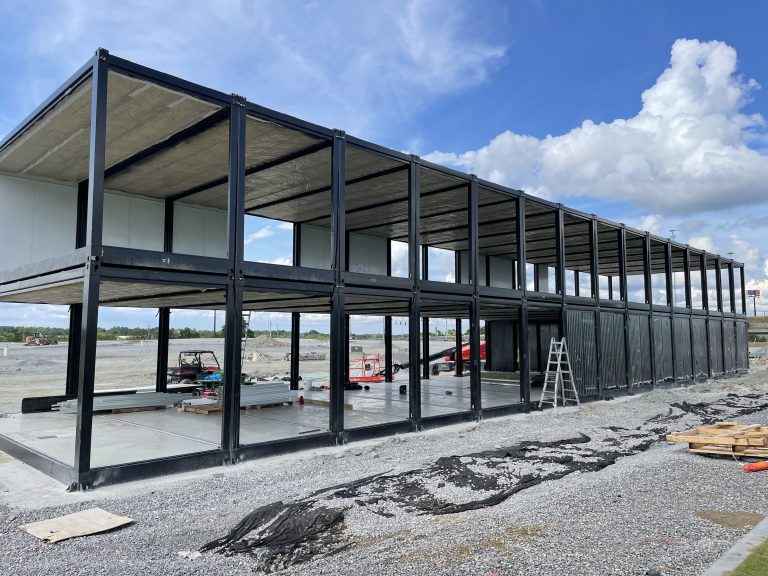
Why Modular
A modular stadium offers several benefits, making it a practical and versatile solution for sports events, concerts, and other large gatherings. Here are some of the key advantages:
1. Flexibility and Scalability
• Customizable Seating Capacity: A modular stadium can be expanded or downsized based on demand. This allows for adjusting the size of the venue according to specific events, ensuring efficient use of resources and improved audience experience.
• Adaptability for Different Events: Modular stadiums can be reconfigured to host a variety of events, including sports, concerts, conventions, and more. This versatility is a key benefit over traditional, fixed stadiums.
2. Cost-Effectiveness
• Lower Initial Construction Costs: Since modular components are pre-fabricated off-site and assembled on location, it reduces construction time and labor costs. This can lead to significant savings compared to traditional construction methods.
• Reduced Maintenance and Operational Costs: Modular stadiums often feature durable materials and designs that require less ongoing maintenance. Additionally, modular elements can be easily replaced or upgraded without requiring a complete overhaul.
3. Speed of Construction
• Faster Build Time: Modular stadiums can be constructed much faster than traditional stadiums. This is particularly beneficial for temporary or event-specific venues that need to be built quickly (e.g., for tournaments, festivals, or world cup events).
• Less Disruption: The modular construction process generates less noise and disruption in the surrounding area, as much of the work is done off-site.
4. Sustainability
• Reduced Environmental Impact: The use of pre-fabricated, reusable modules helps minimize waste and environmental disruption. Many modular stadiums can be made with sustainable
materials, and the construction process generally consumes fewer resources.
• Reusability and Longevity: Some modular stadiums can be dismantled and relocated to different sites after an event or when their purpose changes. This reduces the need to build new facilities from scratch, promoting sustainability in infrastructure.
• Energy Efficiency: Modular designs can incorporate energy-efficient systems like solar panels, rainwater harvesting, and efficient lighting, reducing the stadium’s environmental footprint.
5. Transportability and Mobility
• Easily Relocated: Since the components of a modular stadium are designed to be disassembled and transported, the stadium can be moved to different locations. This is ideal for temporary events or for sports teams that travel between different cities or countries.
• Use for International and Temporary Events: Modular stadiums can be set up for major international events, then packed down and moved to another location, offering a flexible, global solution.
6. Enhanced Fan Experience
• Modern Amenities: Despite being modular, these stadiums still feature modern amenities such as VIP suites, luxury seating, or premium services tailored to the audience.
• Improved Layouts: Modular construction enables innovative seating and layout configurations, allowing for better sightlines, access, and overall audience comfort.
7. Economic Benefits
• Support for Local Economies: Modular stadiums can be built quickly, creating jobs and boosting the local economy without a long-term commitment to infrastructure.
• Tourism and Events: Modular stadiums can also increase tourism by hosting major sporting events or concerts that attract large crowds to the region.
8. Innovation and Technology Integration
• Incorporation of Advanced Technology: Modular stadiums incorporate cutting-edge
technologies, such as smart seating arrangements, advanced lighting and sound systems, Wi-Fi infrastructure, and other tech features to enhance fan engagement and operational efficiency.